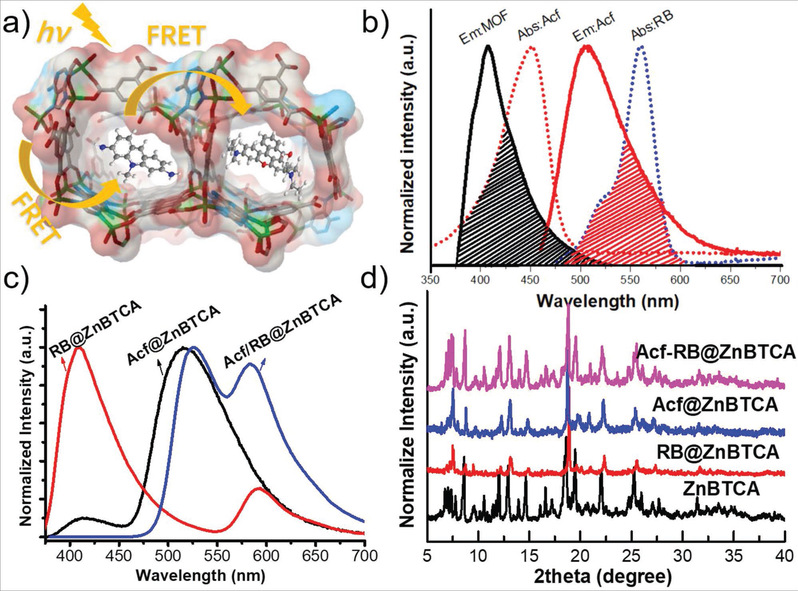
Hong Cai, Weigang Lu, Chen Yang, Ming Zhang, Mian Li, Chi-Ming Che, and Dan Li*

Abstract: Luminescent ratiometric thermometers (LRTs) based on the emission intensity ratio with self-reference functions guarantee a temperature sensing of fast response, high precision, and excellent spatial resolution. For monitoring temperature at the cellular level, the use of metal-organic frameworks (MOFs) as probes, especially biocompatible ones, is still in its nascency. By employing a biological MOF, Zn3(benzene-1,3,5-tricarboxyl)2(adenine)(H2O) (ZnBTCA), as a host and thermosensitive fluorescent dyes as guests, a series of dye@ZnBTCA is synthesized and studied as potential LRT materials, featuring a unique mechanism of tandem Förster resonance energy transfer among the MOF host and the multiple dye guests. This scenario is significantly different from the commonly reported lanthanide or mixed-lanthanide MOFs where energy transfer occurs between lanthanide ions. Acf-RB@ZnBTCA, in particular, not only exhibits highly efficient ratiometric temperature-sensing properties under physiological cellular conditions but also can be excited under visible light.
文章链接:![]() Adv Optical Mater 2018 1801149.pdf
Adv Optical Mater 2018 1801149.pdf




